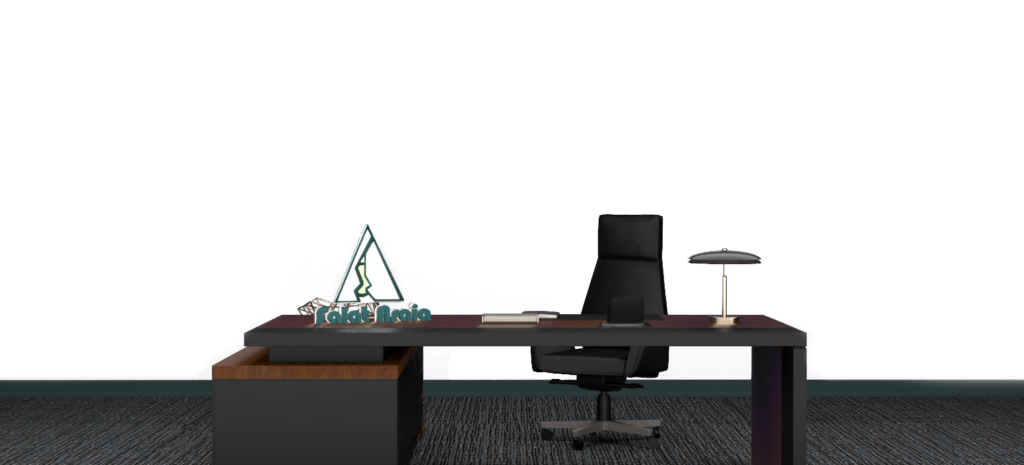What is Feldspar?
Feldspars are a group of tectosilicate minerals that play a crucial role in the structure of Earth’s rocks, containing elements like calcium, potassium, or sodium. These minerals make up more than half of Earth’s crust by weight and are abundant in igneous, sedimentary, and metamorphic rocks worldwide. Feldspars are key components of these rocks, and their content serves as a criterion for classifying many rock types.
Feldspars typically appear in matte white, gray, pink, or dark gray colors with a glassy appearance. These minerals are made up of two intersecting cleavage planes that meet at nearly 90-degree angles, giving their pure crystals a blocky rectangular shape with distinct edges.
Feldspars are divided into two main categories: potassium feldspars and plagioclase. Both groups have two observable cleavages and a wide range of overlapping colors. Plagioclases, in particular, exhibit fine striations, known as striations, on one of their cleavage planes.
Feldspar prices vary depending on their grade, and the feldspar market is highly dynamic due to their wide range of applications. More detailed information will be provided later in this article from the Journal of Physical Chemistry, so stay with us.
Properties of Feldspar
The mineral composition of most feldspars can be described as a ternary system, including albite, orthoclase, and anorthite. Minerals whose compositions are based on the solid solution range between albite and anorthite are known as plagioclase feldspars, while minerals between albite and orthoclase are referred to as alkali feldspars. The presence of potassium and sodium in their composition gives this group the name “alkali feldspars.”
Alkali feldspars, particularly those rich in potassium, have widespread applications in various industries. These minerals serve as fillers in the paint, rubber, adhesive, and plastic industries. Feldspar is also used as a fluxing agent in glass and ceramics manufacturing.
Many everyday products we use are made from feldspar, including floor and bathroom tiles, ceramic and glassware, fiberglass insulation, and various utensils. Additionally, some well-known gemstones such as sunstone, moonstone, labradorite, spectrolite, and amazonite are derived from feldspar minerals.
How Feldspar Is Extracted and Produced
Feldspars are extracted from large granite bodies called plutons. Since feldspar is a major component of Earth’s crust, its reserves are expected to meet long-term demand. Currently, feldspar mines worldwide are capable of adequately supplying raw feldspar.
Extraction is typically done through open-pit mining, either by the feldspar mine owner or by contractors. After drilling and blasting feldspathic rocks, secondary breakage is done using a drop ball. The rocks are then loaded onto trucks by hydraulic shovels and transported to a crushing plant, usually located near the flotation plant.
Physical Properties of Feldspars
Feldspars share a set of common physical properties. Most of these minerals have two directions of perfect cleavage that intersect at nearly right angles. Not only do they have similar cleavage angles, but they also share the same Mohs hardness and specific gravity.
Feldspars typically have a specific gravity ranging from 2.5 to 2.8 and a Mohs hardness of about 6 to 6.5. Additionally, all feldspar minerals exhibit vitreous luster, often with pearly surfaces along their cleavages, making them easily recognizable.
Identifying feldspars in igneous rocks is relatively easy for those familiar with their cleavages. If the crystals are small, they can be distinguished from other minerals using a hand lens due to their distinctive features.
Many feldspar applications depend on their unique behavior when heated. These minerals tend to transition from brittle to plastic at temperatures ranging from 700°C to 800°C. This temperature is much lower than the melting points of many other materials combined with feldspars, making them effective as fluxes.
Applications of Feldspar in Industries
Feldspars have a wide range of applications across various industries due to their diverse physical and chemical properties. Some of the most important uses of feldspar in industries are as follows:
Glass Industry:
Feldspar is one of the primary raw materials used in glass production. Due to its low melting point and fluxing properties, feldspar facilitates the glass melting process. It helps lower the melting temperature of other materials, leading to high-quality glass and reduced energy costs.
Ceramics Industry:
Feldspar is a key material in producing ceramic products like tiles, porcelain, and sanitary ceramics. It acts as a flux, increasing the strength and improving the final appearance of products. It is also used in ceramic glazes to create smooth, glossy surfaces.
Paints and Plastics Industry:
Feldspar serves as a filler in the paints and plastics industry, enhancing physical properties like smoothness, wear resistance, and durability. Due to its specific optical properties, feldspar is used to produce paints with uniform and matte coverage.
Rubber and Adhesives Industry:
Feldspar is used as a filler and reinforcing agent in rubber and adhesive production. It improves flexibility, heat resistance, and the quality and durability of these products.
Electronics Industry:
Due to its thermal and electrical insulating properties, feldspar is used in the electronics industry. It is utilized in producing ceramic electronics and components requiring high resistance to heat and pressure.
Catalyst Industry:
Feldspar serves as a catalyst in some chemical processes, helping improve reactions and reduce energy consumption in chemical production.
Overall, feldspar is a versatile mineral with unique properties that play an essential role in enhancing the quality and performance of various products across industries. Due to its abundance and diverse applications, feldspar is a fundamental material in many industrial processes.
Key Properties of Feldspar for Downstream and Other Industries
One of the most important properties of feldspar for industries is the amount of alumina and alkali content (especially potassium and sodium). Due to these compounds, alkali feldspars (particularly potassium feldspars) have wide-ranging applications in paint, glass, and ceramics manufacturing. Some of the main uses of potassium feldspars are as follows:
- Glass Production:
Feldspar plays a significant role in glass production as a key ingredient. It acts as a catalyst and a lubricant in the glass-making process. As a flux catalyst, it reduces the melting point of quartz while maintaining the viscosity of the glass at desirable levels. The alkali compounds in feldspar make it a highly effective flux in glassmaking. - Reducing Melting Point:
Feldspar acts as a flux, lowering the overall melting point of mixtures, leading to energy savings in glass production. At the initial stages of production, feldspar melts quickly, forming an efficient glass matrix that holds other materials in the melt. Additionally, feldspar can enhance the hardness, durability, and chemical resistance of glass due to the presence of alumina and calcium ions.
Advantages of Using Feldspar in Glassmaking:
One key advantage of using feldspar as a flux in glass production is that it does not alter the redox number of the mixture. Feldspar can be considered an environmentally friendly additive because it reduces energy consumption without introducing harmful or unwanted substances into the process.
Alkali compounds in feldspar—particularly potassium and sodium—reduce the melting temperature of the glass mixture. These compounds facilitate the melting and bonding of other materials in the glass mixture. In the U.S., about two-thirds of the feldspar consumed annually is used in glassmaking, with the remainder primarily used in ceramics. For glassmaking, feldspars are ground to a size of 0.85 mm (20 mesh).
Filler Production:
Feldspar is used as a filler and extender in the paint, rubber, and plastic industries. Properties such as stable pH, chemical inertness, excellent dispersibility, suitable refractive index, frost and abrasion resistance, and low viscosity make feldspar an effective filler. Feldspars used for this purpose are typically finely ground grades.
In plastics, feldspar is used due to its relatively high hardness on the Mohs scale, though it has limited applications in thermoplastics. Feldspar is used as an anti-blocking agent in plastic films, especially in low-density polyethylene (LDPE), polypropylene, and polyvinyl chloride films. This compound prevents materials from sticking together and is also known as an anti-slip agent. Additionally, feldspar is used in LDPE films for better heat management in greenhouses and polytunnels.
In paints, coatings, and varnishes, ultrafine ground feldspar is used as a filler. Adding feldspar is appealing due to its non-toxicity and cost-saving benefits. Additionally, because of its relatively low refractive index (1.0 to 1.5), it does not affect the opacity of the paint.
Ceramics Production:
Feldspar is a primary raw material in ceramic manufacturing. It has no specific melting point and gradually melts at various temperatures, which is one of its key advantages. Feldspar helps melt clay and quartz, facilitating the production process. It is also used as a flux catalyst to create glass coatings at low temperatures and serves as a source of alumina and alkalis in glazes.
Feldspars improve the strength, durability, and body of ceramics while softening and moisturizing other compounds. Feldspars used in ceramics are typically ground to a size of 75 microns (200 mesh). In ceramics, as in glassmaking, feldspars act as fluxes, reducing the melting point of other materials and controlling the staining of ceramic bodies during firing.
Porcelain Production:
Feldspar, along with kaolin and quartz, is one of the main components of modern porcelain ceramics. Hard-paste porcelain is fired at around 1400°C, while soft-paste porcelain is



